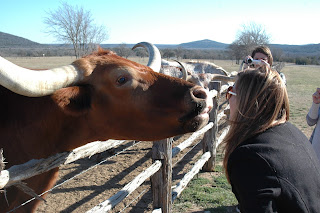Thurber was a company owned town, founded and controlled
from around 1888 through the 1930's by Texas and Pacific Coal Co. (after 1933,
Texas Pacific Oil Company). At its height, it was the largest town between Fort
Worth and El Paso. Every building and inch of ground was owned 100% by Texas
and Pacific Coal Co. Every resident lived in a company house, shopped at
company stores, drank at the company saloon, attended a company school, danced
at the company opera house, and worshiped in company churches.
Thurber was the most important mine site in
Texas for 30 years. 3,000 tons of coal were produced daily. This coal provided
fuel mainly for the Texas and Pacific Railroad, but a dozen other RRs also used
Thurber coal. By ensuring a plentiful coal supply, Thurber helped railroads
open up the great southwest.
Thurber had the best equipped brick plant west of the Mississippi. Manufactured
from the area's rich deposits of shale clay, Thurber brick paved hundreds of
miles of Texas highways and streets: Congress Avenue in Austin; the Galveston
sea wall; the Bankhead Highway; Camp Bowie, Main Street, and the stock yards in
Fort Worth, etc.


Thurber was headquarters of the Texas and Pacific Coal Company which, under the
leadership and persistence of W. K. Gordon, brought in the McCleskey discovery
well at Ranger (16 miles west) for the company. Troops in World War I, which
had been at a standstill, were given the "go-ahead" when this news
was received abroad, as Russia had cut off oil supply to the Allies. Ranger
yielded in one year twice the wealth of the best years in the California and
Klondike gold fields. It was the key that opened the door to West Texas oil
production and made the University of Texas the richest university in North
America. Every Thurber home had running water and electricity. In fact, Thurber
was the first totally electrified city in the United States. A power plant was
erected in 1895, as well as an ice plant with a 17 ton capacity, the largest
ice plant in the southwest. By 1915, each home also had natural gas for heat.








The Thurber coal miners' strike of 1903, which
ended when a contract was signed by John L Lewis and Edgar L. Marston (for
Texas & Pacific) in the old Worth Hotel in Fort Worth, was the beginning of
the labor movement in the southwest. Thurber became the only totally unionized
town in the world, and had two UMW Locals; the English Local and the Italian
Local.


Hundreds of European immigrants, representing eighteen
ethnic groups, began working as coal miners and brick makers. The priest at the
Catholic Church heard confessions in six languages. Thurber was a "melting
pan" for Eastern European immigrants, providing an interesting and
colorful cultural and ethnic mix. OTHER FACTS Thurber was the site of the last
regularly scheduled stage coach in America. It ran from the Hotel Knox to
Thurber Junction (now Mingus, Texas). The Metropolitan Opera troupe stopped in
Thurber en- route from the east coast to the west coast. (The Italians loved
operas.) Famous voices were heard in the Thurber Opera House, where ceiling
fans had been installed (a rarity at that time). The Opera House seated more
than 650 people, and VIP's had their own box seats.







Thurber has eight State historical markers, all within a one
mile radius of downtown Thurber. These markers include the Snake Saloon, Hotel
Knox & Mining Office, New York Hill, the brick plant, the cemetery, St. Barbara's
Catholic Church, Big Lake & Dairy, and Thurber's first coal mine.
Thurber is picturesque, particularly as viewed from
surrounding hills: New York Hill, Stump Hill, Polander Hill, Italian Hill, and
Graveyard Hill. It is ideally located on heavily traveled 1-20 approximately 70
miles west of Fort Worth. There is wonderful potential to preserve the memory
of Thurber by creation of a visitors/history center with artifacts and
displays, a re-enactment of town scenes with period costumes, and interpretive
signs. Thurber could once again have an Opera House with regular performances
and summer stock productions. Thurber could become a park in the flavor of a
little "Williamsburg."


























































